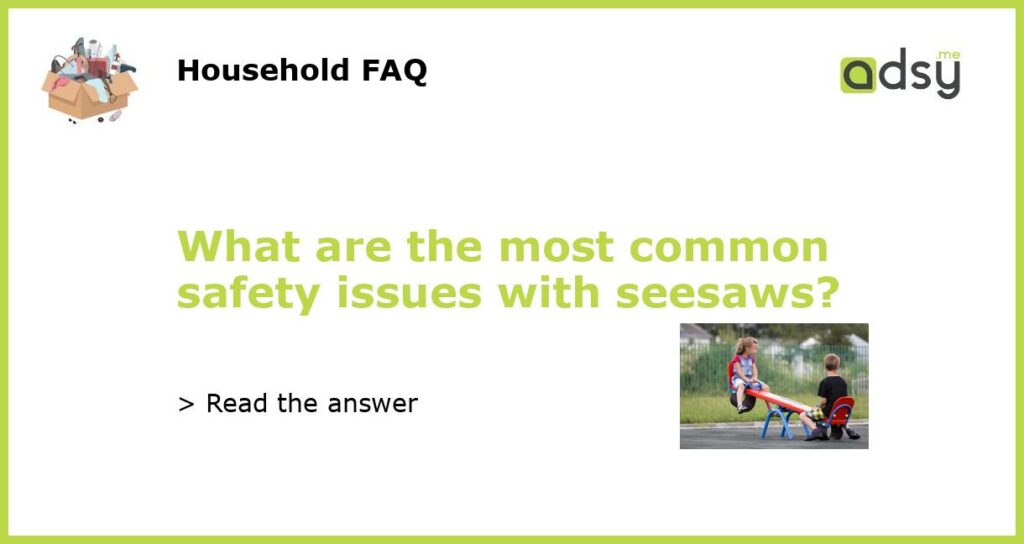The Most Common Safety Issues with Seesaws
Seesaws have been a popular playground equipment for decades, providing children with hours of fun and enjoyment. However, like any other play equipment, seesaws can pose certain safety hazards if not used correctly or if they are not properly maintained. In this article, we will discuss the most common safety issues with seesaws and provide tips on how to prevent accidents.
Lack of Supervision
One of the most common safety issues with seesaws is the lack of proper supervision. Children can get carried away and engage in unsafe behaviors such as jumping off while the seesaw is still in motion or intentionally trying to make the other person fall off. Having an adult or a responsible caregiver present to monitor the children’s behavior and remind them of the proper use of the seesaw can help prevent accidents.
Inadequate Ground Surface
The ground surface around the seesaw should be adequately cushioned to prevent injuries from falls. If the ground is too hard or uneven, a child may hurt themselves if they fall off the seesaw. Installing safety surfacing such as rubber mulch or synthetic turf around the seesaw can provide a softer landing surface and reduce the risk of serious injuries.
Poor Maintenance
Another safety issue with seesaws is poor maintenance. Seesaws should be regularly inspected for any signs of wear and tear, such as loose fittings, cracked seats, or broken handles. If any issues are identified, they should be repaired immediately to ensure the seesaw remains safe for use. Additionally, the seesaw should be kept clean and free from any debris or obstacles that could cause accidents.
Age-Inappropriate Use
Seesaws are designed for specific age groups, and using a seesaw that is not suitable for a child’s age can increase the risk of accidents. Younger children may have difficulty balancing or controlling their movements on a seesaw designed for older children. It is important to ensure that children are using a seesaw that is appropriate for their age and size to minimize the risk of injuries.
Lack of Safety Features
Some older seesaws may lack safety features that are now considered standard in newer designs. For example, seesaws should have handles and footrests for children to hold onto and support themselves while using the equipment. Additionally, seesaws should have proper anchoring to the ground to prevent tipping over during play. When considering the purchase or installation of a seesaw, it is important to choose a model that meets current safety standards and includes these necessary features.






